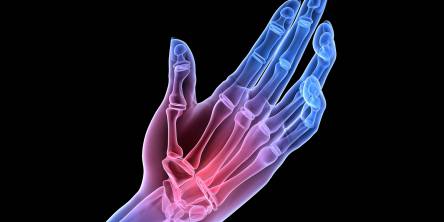History of Littmann Stethoscope

The term stethoscope is derived from two Greek words; stethos (meaning chest) and scopos (meaning examination). Apart from being used by medical practitioners to hear the heart and chest sounds, the stethoscope is also used to listen to bowel sounds and blood flow noises in the veins and arteries.
The first stethoscope was invented in 1816 by a French physician known as Rene Laennec who used a long, rolled paper tube to funnel the sound. The stethoscope was somewhat simple but very effective. Three years later, Laennec improved his paper stethoscope into a wooden monaural stethoscope that had a large diameter base that funneled sound through a small opening. But, unlike modern scopes, this early version only transmitted sound to one ear and had ivory ear-tips.
It wasn’t until 1843, that George P. Cammann of New York developed the first binaural (sound into both ears) stethoscope. This is the model that would be used for over 100 years with very few modifications, one of which was the introduction of an ebony chest piece with tubing made of spirals of wire that was covered in layers of silk dipped in gum elastic. Another modification to the original Cammann stethoscope was done in 1890 when the device was refined with a steel spring between the metal ear tubes.
In 1961, Dr. David Littmann, M.D., (1906-1981), a noted cardiologist, distinguished professor at Harvard Medical School, researcher, inventor, and a recognized international authority on electrocardiography, patented a revolutionary new stethoscope with greatly improved acoustics.
Considered as the most significant milestone in the development of the stethoscope, Dr. Littmann’s invention was a streamlined, lightweight stethoscope, with a single tube binaural, which was available in both stainless steel and light alloy.
The device was described by Dr. Littmann, in the November issue of the AMA journal, as the ideal stethoscope. It included a closed chest piece with a stiff plastic diaphragm to filter-out low-pitched sounds. It also had an open chest piece to hear low frequency as well as high-frequency sounds.
Other innovative features of Dr. Littmann’s stethoscope included firm tubing with a single lumen bore, a spring with precise tension to hold the ear tubes apart with firm and short tubing and had the shortest practical overall length. The device was generally light and convenient to carry and use.
In a bid to promote his invention, Dr. Littmann founded the company Cardiosonics. This company was meant to produce two distinct stethoscopes, one for doctors and another for nurses. On April, 1st 1967, 3M, upon recognizing the acoustics and unique design of the Littmann stethoscopes, decided to acquire Cardiosonics. Dr. Littmann then worked for 3M as an adviser where he helped to further innovate this essential diagnostic tool.
Throughout the years until the late 1970′s, 3M had developed a total of 40 “combination stethoscope” models. The devices were mainly in stainless steel and aluminum featherweight. They had pediatric size, gold-plated chest pieces. The tubing color was still limited to black and grey with lengths of 22 and 28 inches.
It is during this period that the ultimate 3M Littmann Cardiology Stethoscope was born. Commonly known as the “cardiologists’ dream stethoscope” because it was developed by a team of 50 world’s leading cardiologists, this product had a revolutionary two-tubes-in-one design, softer ear-tips and deeper bell for improved response to low frequency. Improvements to the product continued henceforth and in 1987, Tom Packard, a 3M engineer, invented the 3M Littmann Master Cardiology Stethoscope, a unique single-sided chest piece stethoscope which features 3M’s tunable diaphragm technology.
Choosing the Right Littman Stethoscope
The stethoscope is a device that doctors use to listen to sounds inside the body, like the heartbeat. It is used to generally reveal the overall health condition of a patient. It also helps in detecting and diagnosing ailments and diseases.
When it comes to stethoscopes, the most popular brand is the Littman brand. There are different types of this stethoscope. Here is a simple guide to help you choose the best Littman stethoscope for your needs.
The Littman Master Classic II stethoscope is ideal for doctors who work where there is a lot of noise in the surroundings, like outdoors or in mobile medical hospitals. In places where there are many patients, visitors, or children, this stethoscope still works effectively.
The Cardiology III is suitable for use when listening to the sounds in the lung area. This type of stethoscope is often used by pediatricians or doctors who specialize in treating children. It is also a favorite of med students because it is very easy to use and relatively affordable.
Classic III is one of the favorite stethoscopes of many doctors because it is an all-around type of stethoscope that can be used to listen to almost any part of the body.
The most recent model is the Littman model 3000. It is an electronic stethoscope that effectively eliminates ambient sounds coming from different directions. Since it is an electronic device, it can amplify or increase body sounds to something that a doctor would easily and clearly hear.
If you are planning to buy a stethoscope, the Littman brand is one brand you should consider. It is very durable and widely used by medical practitioners around the world. Using stethoscopes that are of poor quality can affect diagnosis and treatment because the device may not be accurate at all. Never compromise quality for the price.
Similar Articles
Veins on the skin that produce swelling may indicate varicose veins. Varicose veins are a vein disorder, and their role is to return blood from the leg to the heart. The specific cause of varicose veins, a prevalent condition, is unknown.
A healthy spine is the foundation of a functioning body. It supports your frame while allowing you to bend, flex, and move more freely. However, most people neglect the importance of spine health until they have a back condition.
Whether you're having trouble moving body parts or experiencing worsening joint discomfort, an orthopedic doctor can help. They can treat anything from a minor strain to complex treatments such as shoulder replacement. The appropriate treatment from an orthopedic expert at the right time might relieve your pain and improve your symptoms in less time.
When it comes to trauma, professionals in the mental health sector readily admit that no single style of therapy or intervention is appropriate for every case or individual.
Rheumatoid arthritis (RA) is a type of autoimmune disease that occurs when the body's immune system attacks the lining of joints, causing inflammation and causing symptoms like pain and stiffness. RA usually affects both sides of the body in a similar way, but small joints of the hands and feet are often affected first, often knuckle joints of the fingers.
An electroencephalogram (EEG) is a test that measures the electrical activity in the brain. Healthcare experts utilize it to evaluate and comprehend neurological illnesses, sleep disorders, and brain damage.
So, your back decided to stage a mutiny and gift you with a herniated disc. Lovely. Now what? If you’re imagining a future filled with endless discomfort and groaning every time you get out of bed, don’t fret. There are plenty of ways to tackle a herniated disc and get back to living your best, pain-free life.
Back pain – it’s not just a matter of “I lifted a heavy box, and now my back hurts.” It’s often the result of a complex dance between our minds and bodies, with stress, anxiety, and emotions playing lead roles. If you’ve ever woken up with a stiff back after a tough week or felt your spine twinge just from reading a long email chain, you’re not alone.
Chronic pain is a medical problem that affects many people around the world. Unlike acute pain, which is a short-term response of the body to tissue damage, chronic pain lasts longer, often without obvious physical damage. It can last from several months to several years, and its consequences can affect all aspects of a person's life









